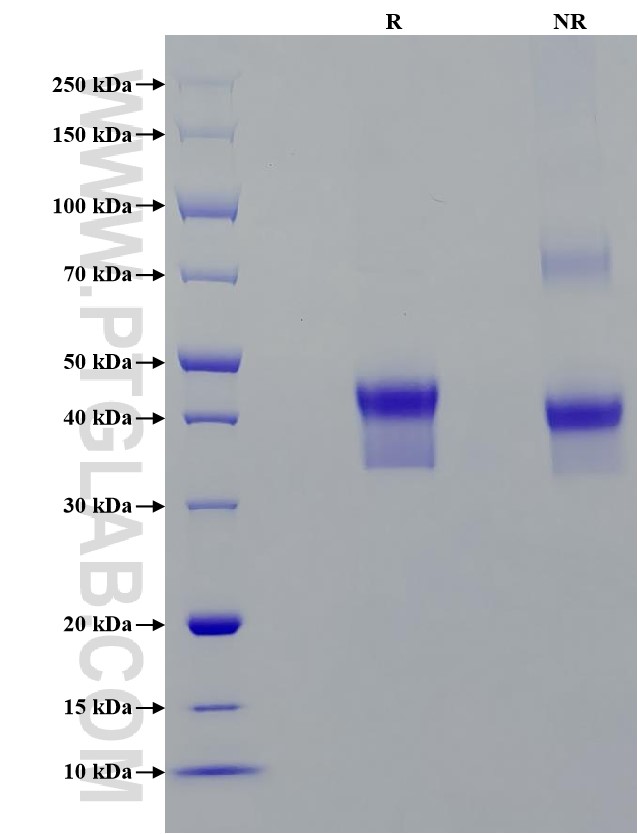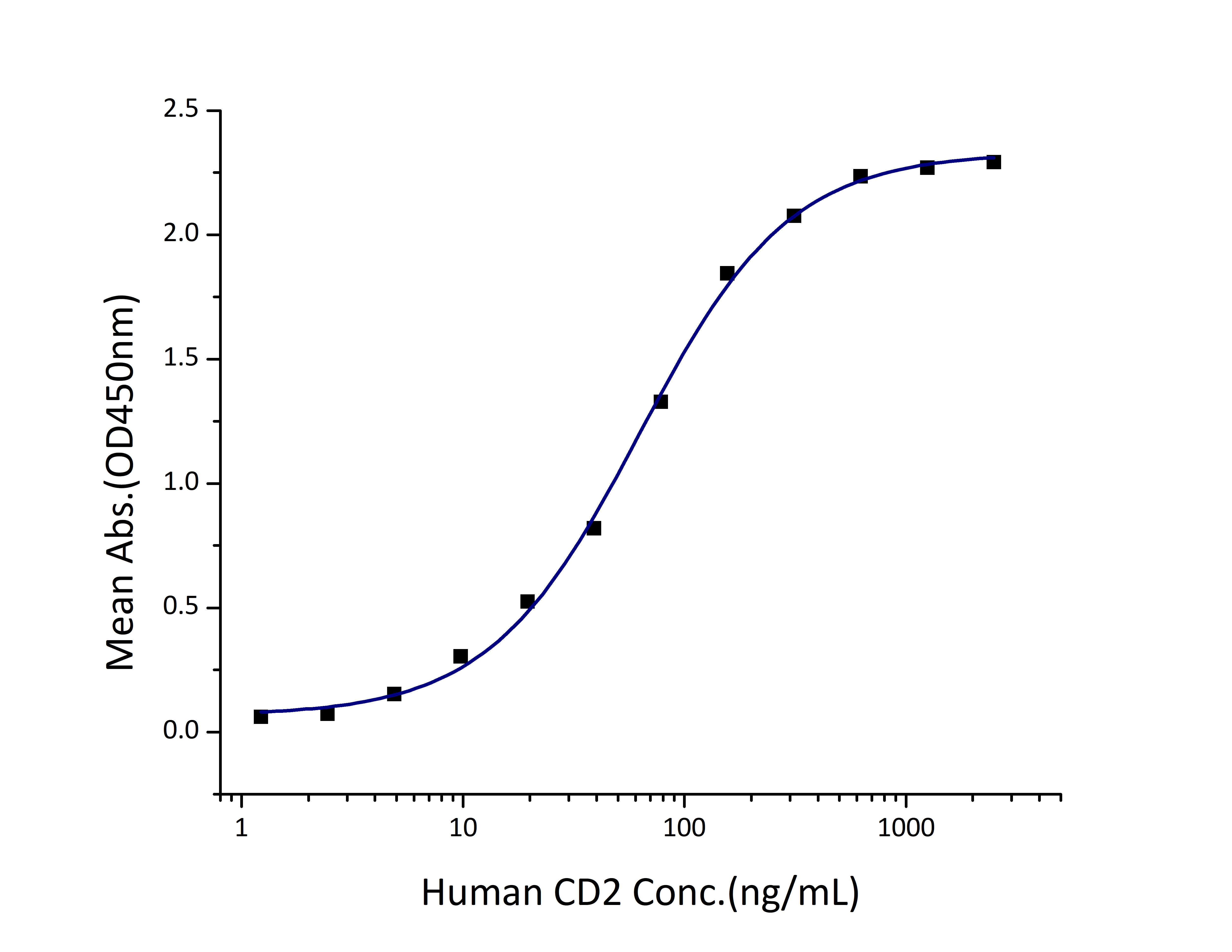Recombinant Human CD2 protein (Myc Tag, His Tag)
种属
Human
纯度
>90 %, SDS-PAGE
标签
Myc Tag, His Tag
生物活性
EC50: 30-120 ng/mL
验证数据展示
产品信息
| 纯度 | >90 %, SDS-PAGE |
| 内毒素 | <0.1 EU/μg protein, LAL method |
| 生物活性 |
Immobilized Human CD58 (His tag) at 0.5 μg/mL (100 μL/well) can bind Human CD2 (Myc tag, His tag) with a linear range of 30-120 ng/mL. |
| 来源 | HEK293-derived Human CD2 protein Lys25-Asp209 (Accession# P06729) with a Myc tag and a His tag at the C-terminus. |
| 基因ID | 914 |
| 蛋白编号 | P06729 |
| 预测分子量 | 23.8 kDa |
| SDS-PAGE | 40-48 kDa, reducing (R) conditions |
| 组分 | Lyophilized from 0.22 μm filtered solution in PBS, pH 7.4. Normally 5% trehalose and 5% mannitol are added as protectants before lyophilization. |
| 复溶 | Briefly centrifuge the tube before opening. Reconstitute at 0.1-0.5 mg/mL in sterile water. |
| 储存条件 |
It is recommended that the protein be aliquoted for optimal storage. Avoid repeated freeze-thaw cycles.
|
| 运输条件 | The product is shipped at ambient temperature. Upon receipt, store it immediately at the recommended temperature. |
背景信息
CD2 (also known as LFA-2, T-cell surface antigen T11/Leu-5, LFA-3 receptor, E-rosette receptor) is a member of the immunoglobulin superfamily. It is a transmembrane glycoprotein present on T cells, NK cells, thymocytes and dendritic cells. CD2 functions as an adhesion molecule, binding with lymphocyte function-associated antigen (LFA-3/CD58) in humans. It has also been reported to interact with CD48 and CD59. CD2 plays important roles in cell adhesion between T-cells/NK cells and other cell types, T-cell activation, NK-cell activation, and thymocyte development.
参考文献:
1. P A van der Merwe, et al. (1994) Biochemistry. 33(33):10149-60. 2. S J Davis, et al. (1996) Immunol Today. 17(4):177-87. 3. A L Wilkins, et al. (2003) Curr Protein Pept Sci. 4(5):367-73. 4. Christian Binder, et al. (2020) Front Immunol. 11:1090.



